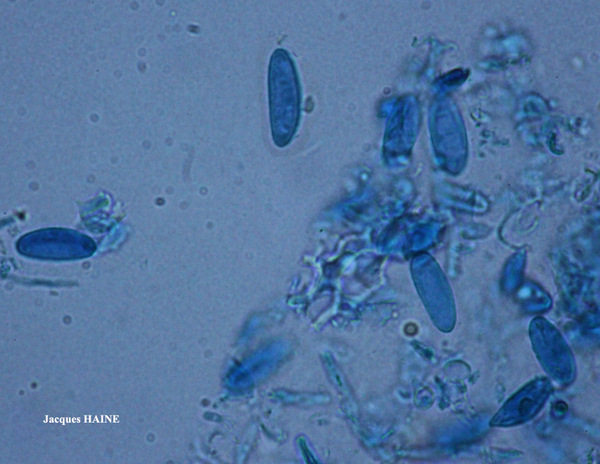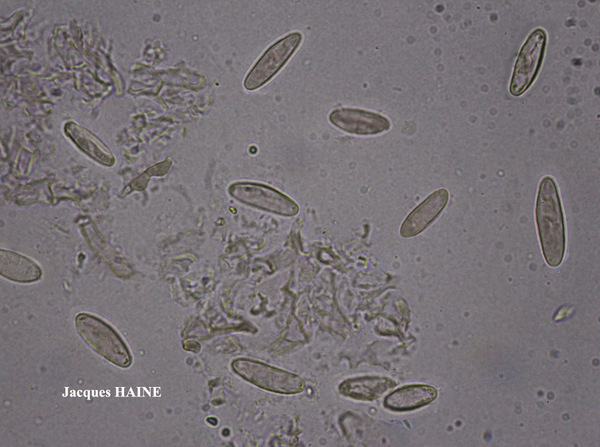Dermatocarpon leptophyllodes (Nyl.) Zahlbr.
Cat. Lich. Univ., 1: 219, 1921. Basionym: Endocarpon leptophyllodes Nyl. - Flora, 59: 576, 1876.
Synonyms: Dermatocarpon diffractum (Th. Fr.) Blomb. & Forssell; Dermatocarpon lorenzianum Anders; Dermatocarpon miniatum var. diffractum Th. Fr.; Dermatocarpon phonolithicum Anders
Distribution: N - VA (Piervittori & al. 2004). S - Cal (Puntillo 1996).
Description: Thallus foliose, heteromerous, dorsiventral, monophyllous, 170-420 µm thick when wet, consisting of 1-4(-7) mm wide, subumbilicate, usually densely aggregated lobes, forming over 3 cm wide, sometimes subcrustose patches. Upper surface grey, lower surface brown to dark brown, smooth. Upper and lower cortices pseudoparenchymatous, composed of cells arranged in irregular vertical columns, the upper cortex overlain by an epinecral layer (best visible along margins) of broken, air-filled cells; medulla white, I-. Perithecia black, immersed in the thallus, without involucrellum, 0.2-0.3 mm high and 0.16-1.26 mm wide. Exciple colourless except in the brown uppermost part; hamathecium of periphyses and periphysoids, interascal filaments absent; hymenial gel hemiamyloid. Asci 8-spored, clavate, I-, fissitunicate, the wall thickened above, with an ocular chamber, dehiscent by extrusion of an endotunica to form a delicate rostrum, Verrucaria-type. Ascospores 1-celled (to rarely 1-septate when overmature), hyaline. ellipsoid to narrowly ellipsoid, (12-)13-20(-22) x 5-8 µm. Pycnidia common, black, immersed, multi-chambered. Conidia short-bacilliform. Photobiont chlorococcoid. Spot tests: cortex and medulla K-, C-, KC-, P-, UV-. Chemistry: without lichen substances.Note: a temperate to southern boreal-montane species found on periodically inundated surfaces of basic siliceous rocks. The species is not easily recognised as a Dermatocarpon, the thallus consisting of tightly arranged squamiform lobes (but with the pseudoparenchymatous lower cortex which is typical for the genus). For further details see Orange (1998).
Growth form: Squamulose
Substrata: rocks
Photobiont: green algae other than Trentepohlia
Reproductive strategy: mainly sexual
Most common in areas with a humid-warm climate (e.g. most of Tyrrenian Italy)
Periodically submerged (e.g. in creeks)
Commonnes-rarity: (info)
Alpine belt: absent
Subalpine belt: very rare
Oromediterranean belt: extremely rare
Montane belt: extremely rare
Submediterranean belt: absent
Padanian area: absent
Humid submediterranean belt: absent
Humid mediterranean belt: absent
Dry mediterranean belt: absent
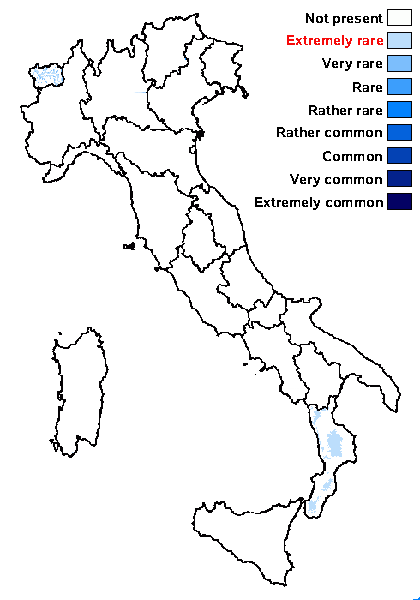
Predictive model
Herbarium samples
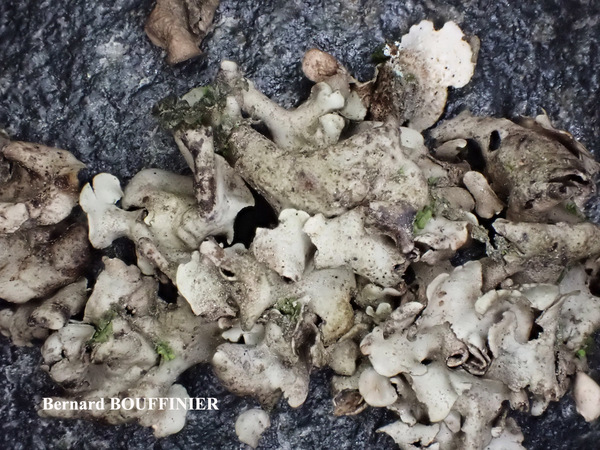
Bernard Bouffinier - Source: http://www.lichensmaritimes.org/index.php?task=fiche&lichen=968&lang=en
France, Gorges du Stangala
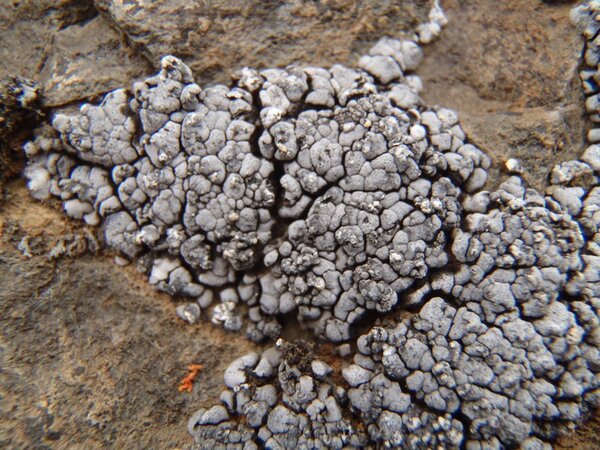

Curtis Randall Björk – CC BY-SA 4.0
Clearwater Valley, BC, First Canyon Uplands Date: 2011-05-05 On cliffs of pillow basalt on south-facing slope, dry, lightly forested
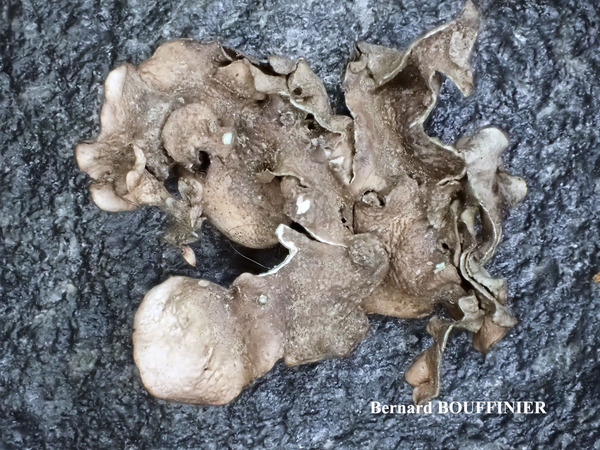
Bernard Bouffinier - Source: http://www.lichensmaritimes.org/index.php?task=fiche&lichen=968&lang=en
France, Gorges du Stangala
face inferieure
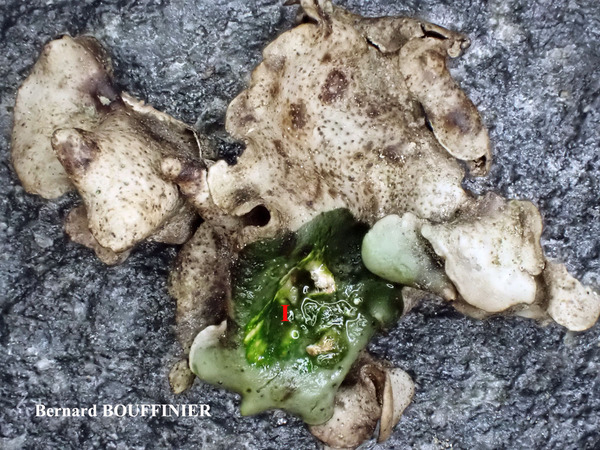
Bernard Bouffinier - Source: http://www.lichensmaritimes.org/index.php?task=fiche&lichen=968&lang=en
France, Gorges du Stangala
reaction iode
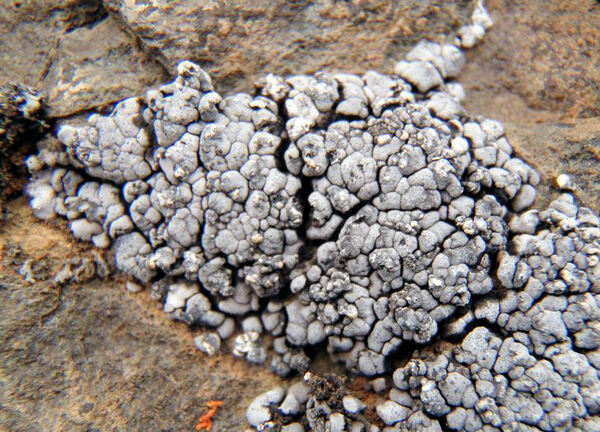

Curtis Randall Björk CC BY-SA 4.0
Clearwater Valley, BC, First Canyon Uplands On cliffs of pillow basalt on south-facing slope, dry, lightly forested
2011-05-05
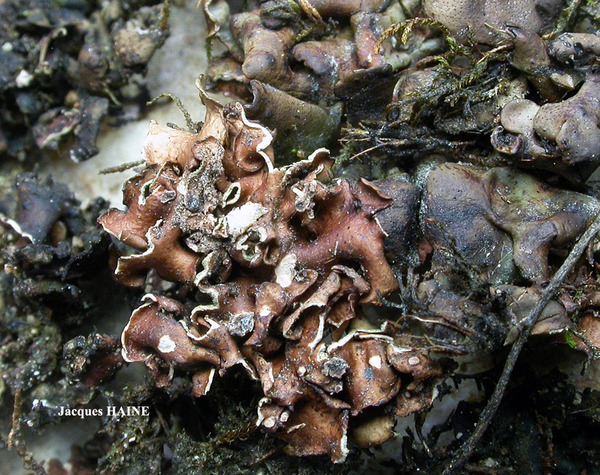
Jacques Haine - Source: http://www.lichensmaritimes.org/index.php?task=fiche&lichen=968&lang=en
France, St. Herbot
dessous
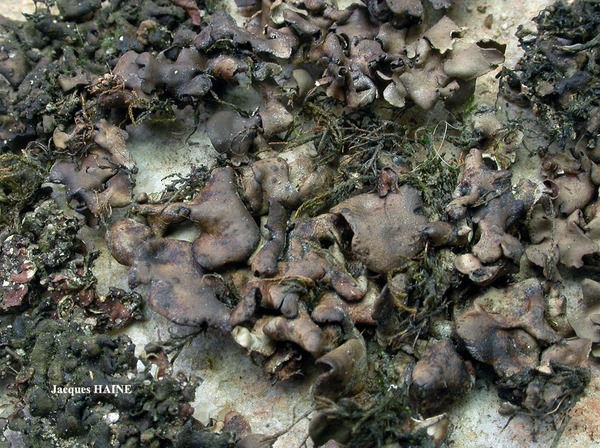
Jacques Haine - Source: http://www.lichensmaritimes.org/index.php?task=fiche&lichen=968&lang=en
France, St. Herbot

Jacques Haine - Source: http://www.lichensmaritimes.org/index.php?task=fiche&lichen=968&lang=en
France, St. Herbot
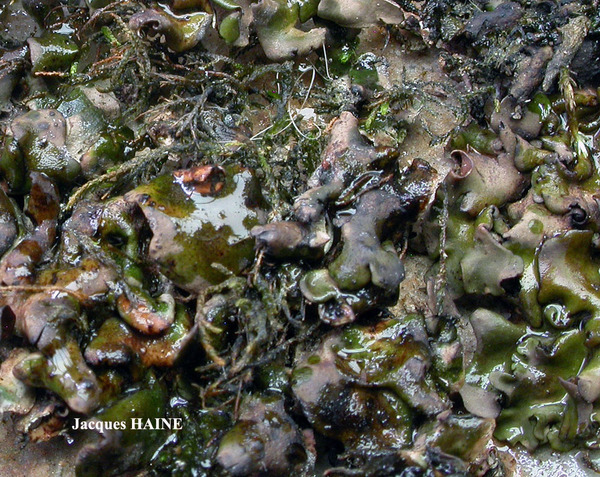
Jacques Haine - Source: http://www.lichensmaritimes.org/index.php?task=fiche&lichen=968&lang=en
France, St. Herbot

Jacques Haine - Source: http://www.lichensmaritimes.org/index.php?task=fiche&lichen=968&lang=en
France, St. Herbot
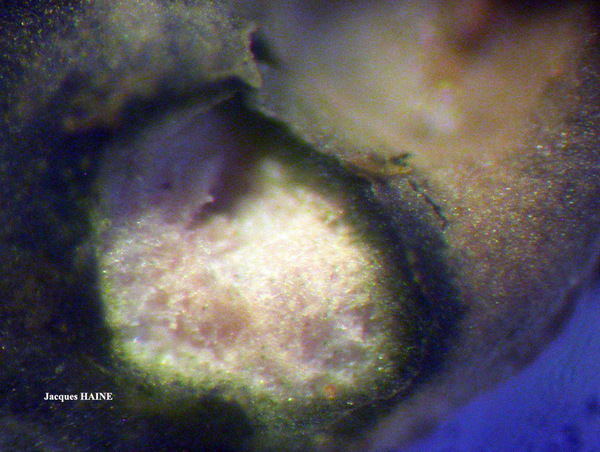
Jacques Haine - Source: http://www.lichensmaritimes.org/index.php?task=fiche&lichen=968&lang=en
France, St. Herbot
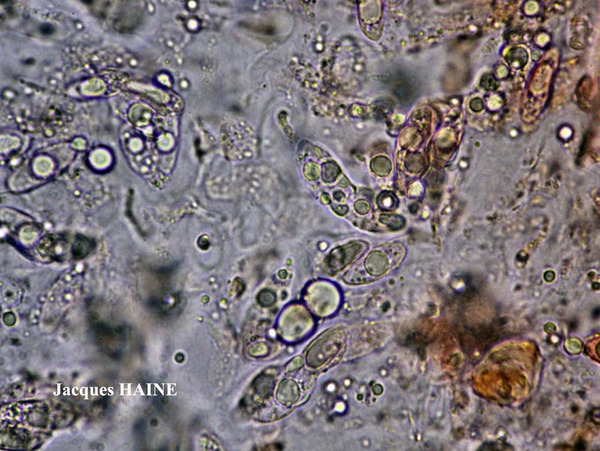
Jacques Haine - Source: http://www.lichensmaritimes.org/index.php?task=fiche&lichen=968&lang=en
France, St. Herbot
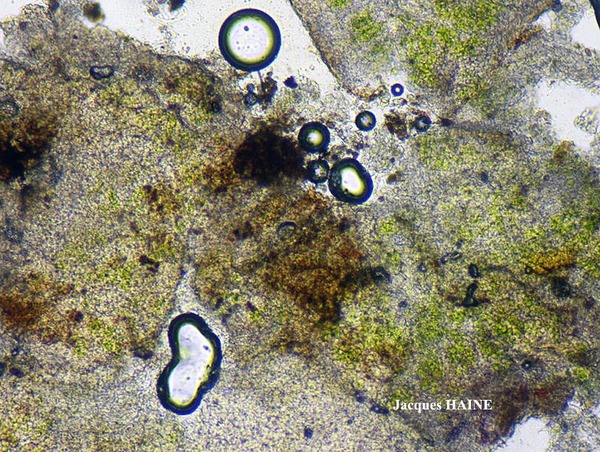
Jacques Haine - Source: http://www.lichensmaritimes.org/index.php?task=fiche&lichen=968&lang=en
France, St. Herbot
Growth form: Squamulose
Substrata: rocks
Photobiont: green algae other than Trentepohlia
Reproductive strategy: mainly sexual
Most common in areas with a humid-warm climate (e.g. most of Tyrrenian Italy)
Periodically submerged (e.g. in creeks)
Commonnes-rarity: (info)
Alpine belt: absent
Subalpine belt: very rare
Oromediterranean belt: extremely rare
Montane belt: extremely rare
Submediterranean belt: absent
Padanian area: absent
Humid submediterranean belt: absent
Humid mediterranean belt: absent
Dry mediterranean belt: absent

Predictive model
| Herbarium samples |

Bernard Bouffinier - Source: http://www.lichensmaritimes.org/index.php?task=fiche&lichen=968&lang=en
France, Gorges du Stangala


Curtis Randall Björk – CC BY-SA 4.0
Clearwater Valley, BC, First Canyon Uplands Date: 2011-05-05 On cliffs of pillow basalt on south-facing slope, dry, lightly forested

Bernard Bouffinier - Source: http://www.lichensmaritimes.org/index.php?task=fiche&lichen=968&lang=en
France, Gorges du Stangala
face inferieure

Bernard Bouffinier - Source: http://www.lichensmaritimes.org/index.php?task=fiche&lichen=968&lang=en
France, Gorges du Stangala
reaction iode


Curtis Randall Björk CC BY-SA 4.0
Clearwater Valley, BC, First Canyon Uplands On cliffs of pillow basalt on south-facing slope, dry, lightly forested
2011-05-05

Jacques Haine - Source: http://www.lichensmaritimes.org/index.php?task=fiche&lichen=968&lang=en
France, St. Herbot
dessous

Jacques Haine - Source: http://www.lichensmaritimes.org/index.php?task=fiche&lichen=968&lang=en
France, St. Herbot

Jacques Haine - Source: http://www.lichensmaritimes.org/index.php?task=fiche&lichen=968&lang=en
France, St. Herbot

Jacques Haine - Source: http://www.lichensmaritimes.org/index.php?task=fiche&lichen=968&lang=en
France, St. Herbot

Jacques Haine - Source: http://www.lichensmaritimes.org/index.php?task=fiche&lichen=968&lang=en
France, St. Herbot

Jacques Haine - Source: http://www.lichensmaritimes.org/index.php?task=fiche&lichen=968&lang=en
France, St. Herbot

Jacques Haine - Source: http://www.lichensmaritimes.org/index.php?task=fiche&lichen=968&lang=en
France, St. Herbot

 Index Fungorum
Index Fungorum
 GBIF
GBIF
